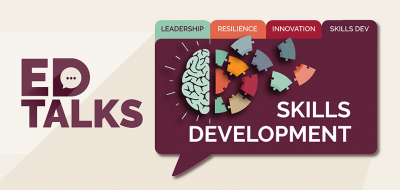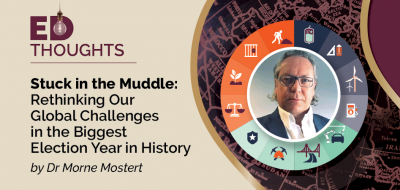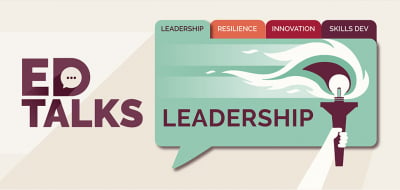Why conflict resolution is important in the workplace
As far back as the start of human history, whenever more than two people have been tasked with making a decision or working together, differences have cropped up. In the 21st century, specifically in workplaces, these differences can lead to disputes, with studies showing that an average employee spends 2.1 hours a week dealing with conflict. But there are effective ways for managers and team leaders to find conflict resolutions.
What is the difference between healthy and unhealthy conflict?
Conflict is often thought of as something negative that has to be avoided. However, it is through exploring conflicting views of reality, through challenging set opinions and engaging in robust debate that civilisations progress, societies grow, innovation flourishes and organisations prosper.
Healthy conflict is determined by disagreements or differences that are resolved in a respectful manner and in which everyone can safely participate. Unhealthy conflict, in contrast, is destructive and includes instances where people blame each other and stifle others’ opinions or creativity.
When introducing conflict-resolution strategies in the workplace, it is important to distinguish between task conflict (constructive) and personal conflict (destructive). Task conflict is when you disagree with something you cannot control. It is needed and allows for healthy, robust debate about strategies, processes or ways of doing something.
Allowing yourself to be challenged by others’ opinions, views and approaches is an essential element of creativity and innovation. It helps counter the brain’s natural drive towards pattern-making, which is when you figure out how to do something and it becomes a habit (you stop consciously thinking about it when you perform the action).
Conflict can go wrong when it shifts from being task-focused to being person-focused. This is evident when a person starts blaming others or attributing undesirable characteristics on the other person they are in conflict with. Phrases such as “You don’t listen”, “You always…” and “Can’t you understand/think” often indicate a shift to an unhealthy conflict behaviour. In order to find conflict resolutions, you need to first understand conflict, become comfortable with it and manage it in a way that separates it from your in-built biases.
What’s your approach to conflict?
There are various psychometric tools to help individuals and teams understand their natural approaches to conflict. However, you are not a victim to your personality-DNA and if you can understand your likely responses in conflict situations, it will help you catch yourself in the moment and choose behaviours that lead to better conflict resolutions.
The 3 phases of conflict
A great tool to help you build self-awareness in conflict situations was developed by the psychologist Elias H Porter and consists of three phases:
- Phase 1 conflict has the potential to be productive and positive. In this phase, you are still able to maintain your composure and entertain the issue on which you disagree. You are also still able to consider both your and the other person’s interests objectively. This is the territory of robust and constructive debate;
- In Phase 2 conflict, you stop considering the other person’s interests and views and lose some objectivity; and
- In Phase 3, conflict can get out of control and risks becoming personal. In this phase, you often drop the issue under contention and start arguing in order for your viewpoint to win.
A critical aspect of finding conflict resolutions is to learn how to catch conflict before it goes beyond Phase 1. To achieve this, you need to understand how you approach the first phase of conflict then identify ways to respect others’ viewpoints without making them personal.
The building blocks of conflict
Every person deals with the three phases of conflict in a predictable manner through different approaches. Porter outlines these approaches as:
- Blue – Considering ways of accommodating the other person;
- Red – Debating or engaging more forcefully; and
- Green – Reflecting and gathering more information.
The sequence that you go through these approaches differs from person to person. For example, in the first phase of conflict, you may want to engage, debate and take the issue head on (the Red approach) while your colleague will stand back, cross her arms and become quiet while she thinks (the Green approach). This leads you to think that she is being withdrawn and ignoring you, so it makes you angry and more determined to argue (again, the Red approach). But this makes her go even more quiet. Due to this, the argument can quickly head into Phase 2, becoming destructive. By learning to understand that your colleague’s Green phase 1 means she needs time to reflect and think before engaging, you can find better conflict resolutions.
The building blocks of the stages of conflict sequence
*Source: Elias H Porter, Relationship Awareness Theory, Personal Strengths Publishing, 1996
Building foundations of trust
Conflict resolution in long-term one-on-one or team relationships requires trust. Trust is the thread with which effective human relationships (and dealing with conflict competently) are woven together over time.
An easy entry to developing trust is for people to really get to know each other’s stories – whether as part of leadership development, working with teams or diversity training. It requires a level of openness, vulnerability and authenticity that has the ability to shift relationships in a short space of time.
At the end of this process, the reactions are often similar to a “namaste”, where people acknowledge others beyond their job titles and roles. Once you connect with others’ experiences of heartache or joy, your humanity connects with them at a different level. This creates a relationship foundation for dealing with conflict and finding good conflict resolutions.
Play by the rules
Every game has rules. The clearer the rules, the better everyone can play the game. Sometimes, leadership groups and teams do not know how to reach satisfactory conflict resolutions as they lack a clear understanding of the rules for dealing with the challenges of day-to-day interaction, disagreement and debate.
In order to build a team that can deal well with conflict resolution, you should try to provide structure and rules for when and how your team interacts and communicates. The works of Nancy Kline and Runde and Flanagan provide practical guidelines and rules for setting up an environment that facilitates conflict resolution.
An open mind, heart and will
Another aspect people often struggle with is listening. To be able to deal with conflict and go against your own personality-DNA requires good listening and staying open to what others are saying. Otto Scharmer says this requires an “open mind, open heart and open will”.
An open mind requires your brain to keep quiet, going against your natural reaction of jumping to conclusions based on old knowledge. Rather, you need to stay curious to the possibility of new facts and a different truth. An open heart means keeping your emotions positive towards others and seeing the world through their eyes. An open will asks that you stay open to a different possible outcome, forcing you to remain in Porter’s Phase 1 of conflict where you may find a different conflict resolution to what your mind is telling you.
Reflect, adjust and celebrate
Conflict resolution does not come easily. Sometimes it calls for a time out, letting your adrenaline and cortisol levels drop and coming back to the problem later. And when you do get conflict resolution right, make sure you reflect on the process, celebrate it and bank it for the next time you’re faced with a conflict situation.
Improve your talent management and leadership skills that will encourage your team to find constructive conflict resolutions and deliver optimal results by registering to attend one of USB-ED’s management development courses.
written by





